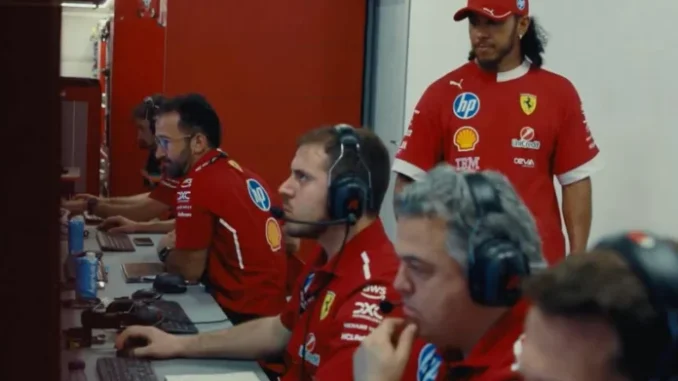
Ferrari is working on various fronts for the imminent future in F1. One of these is the ability to optimize the performance of the car through the use of tires. We know well how important and necessary this factor is, decisive at the moment. It is obvious that there are several parameters that contribute to the optimal use of the compounds and unfortunately, as often happens, an unsuitable value is enough to throw everything off.
This is a bit of a problem for the Reds, which inevitably affects the outcome of the race. Starting behind is never useful in general. Furthermore, as we explained yesterday, where Leclerc himself confirmed the fact, Ferrari, compared to other top teams, suffers more from harmful turbulence in the slipstream . This means that being behind an opponent, in dirty air, limits the performance of the Reds even more.

Technical director Loic Serra is pushing hard on this primary element, to try, once and for all, to take a clear advantage from the tires. Not doing so means losing a lot of performance. In theory, from the first European Grands Prix the tune should change , because nurturing the goal of returning to the forefront of the fight cannot ignore this more than decisive aspect.
Hamilton, the different approach on tyre activation compared to Leclerc
Looking at the telemetry graph, relating to the preparation of the last part of the qualifying lap in Jeddah, we notice how the two Ferrari drivers are more cautious than McLaren and Red Bull. The goal, in this case, is to stabilize the temperature of the tires slightly below the ideal threshold. To achieve this, Charles maintains a constant speed between 150 and 200 km/h, accelerating significantly before the last corner to accumulate speed and prepare for braking.
In agreement with his race engineer, on the contrary, Hamilton adopts a different strategy: he slows down well in advance before the final braking point , alternating short accelerations and decelerations. The use of the brake is one of the most common methods to generate energy in the tire. The Englishman usually uses this technique, already seen in Bahrain, which allows him to put energy into the compound more consistently.

A move that does not stabilize the temperature as well as Leclerc . For the rest we can say that a context where this continuous up-and-down speed occurs, by reflex generates a transversal stress in the surface part of the rubber that absorbs energy to be transferred to the bulk, the metal plate located under the tread which in this way does not receive the correct heat.
Ferrari, the measures to manage the tyres
The way Ferrari manages the tires highlights how narrow the window of use of the SF-25 is. According to the information gathered by our editorial team, the group of technicians in Maranello has identified a good development path for the single-seater. The understanding of the car is increasing and with it the ability to manage its behavior, race after race, over the course of the weekend on the track.
The correct working point of the car is expanding, and especially with Leclerc the steps forward in the management of the car have arrived. Nevertheless, updates are needed to increase the operational range and unlock other still unexpressed performance. We therefore await Imola, where the generous package of updates expected should make the generation of aerodynamic load more effective.

A factor that will automatically allow the drivers to keep the compounds in the right operating window and, above all, for the entire duration of the flying lap. Although such a deficit in qualifying can turn into an advantage during the race, Ferrari has been looking for a compromise between these two sessions since last season. Up until Bahrain there was a general adjustment, to understand the problems encountered. Now it’s time to solve them, starting from Imola.

Leave a Reply